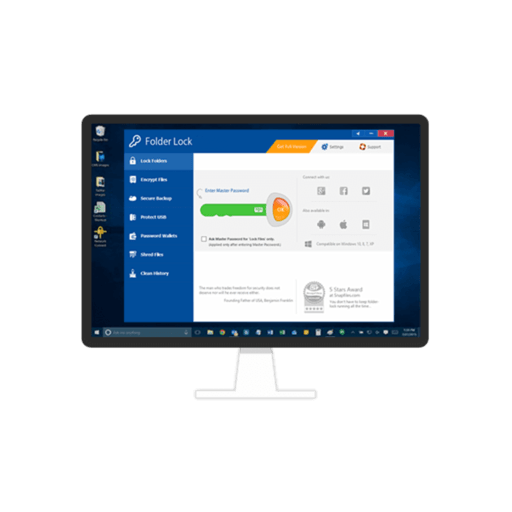

The sharing mode (dwShareMode) parameter of the CreateFile function (used to open files) determines file-sharing. This is typically done through the Task Manager utility. If so, the user may be able to restore file access by manually terminating the malfunctioning program. Improper error-handling in an application program can lead to a scenario where a file is locked (either using "share" access or with byte-range file locking) and cannot be accessed by other applications. The client will observe slower access because read and write operations must be sent to the server where the file is stored.
#Folder lock alternative windows
For example, the Windows file-sharing mechanism will typically disable client side caching of a file for all clients when byte-range locks are used by any client. For applications that use the file mapping APIs in Windows, byte-range locks are not enforced (also referred to as advisory locks.) Byte-range locking may also have other side-effects on the Windows system. Note that the region of the file being locked is not required to have data within the file, and applications sometimes exploit this ability to implement their functionality.įor applications that use the file read/write APIs in Windows, byte-range locks are enforced (also referred to as mandatory locks) by the file systems that execute within Windows. Such byte-range locks specify a region of the file (offset and length) and the type of lock (shared or exclusive). Thus, an application must explicitly allow sharing when it opens a file otherwise it has exclusive read, write, and delete access to the file until closed (other types of access, such as those to retrieve the attributes of a file are allowed.)įor a file opened with shared access, applications may then use byte-range locking to control access to specific regions of the file. Windows inherits the semantics of share-access controls from the MS-DOS system, where sharing was introduced in MS-DOS 3.3 . by Windows file systems disallowing executing files from being opened for write or delete access.using byte-range locks to arbitrate read and write access to regions within a single file.using share-access controls that allow applications to specify whole-file access-sharing for read, write, or delete.Microsoft Windows uses three distinct mechanisms to manage access to shared files: IBM pioneered file locking in 1963 for use in mainframe computers using OS/360, where it was termed "exclusive control". File locking may also refer to additional security applied by a computer user either by using Windows security, NTFS permissions or by installing a third party file locking software.

Poor use of file locks, like any computer lock, can result in poor performance or in deadlocks. Although this does prevent any other process from accessing the file, it can be more efficient than individually locking many regions in the file by removing the overhead of acquiring and releasing each lock. Database maintenance uses file locking, whereby it can serialize access to the entire physical file underlying a database.
#Folder lock alternative update
Most operating systems support the concept of record locking, which means that individual records within any given file may be locked, thereby increasing the number of concurrent update processes. Process B has now written its stale account-balance value to the file, causing the changes made by process A to be lost.Process B, which still has the original stale value for the account balance in its copy of the customer record, updates the account balance and writes the customer record back to the file.



 0 kommentar(er)
0 kommentar(er)
